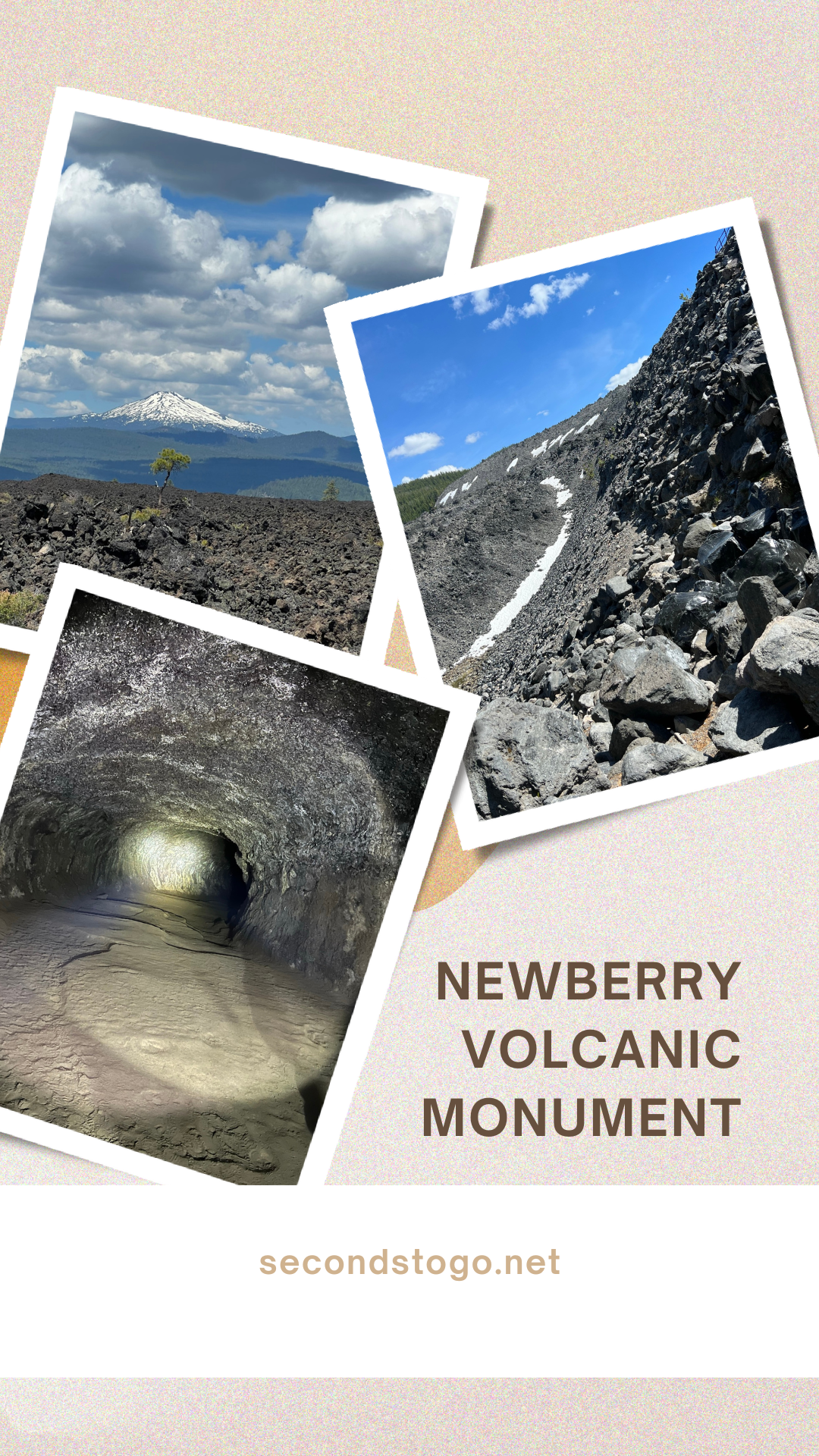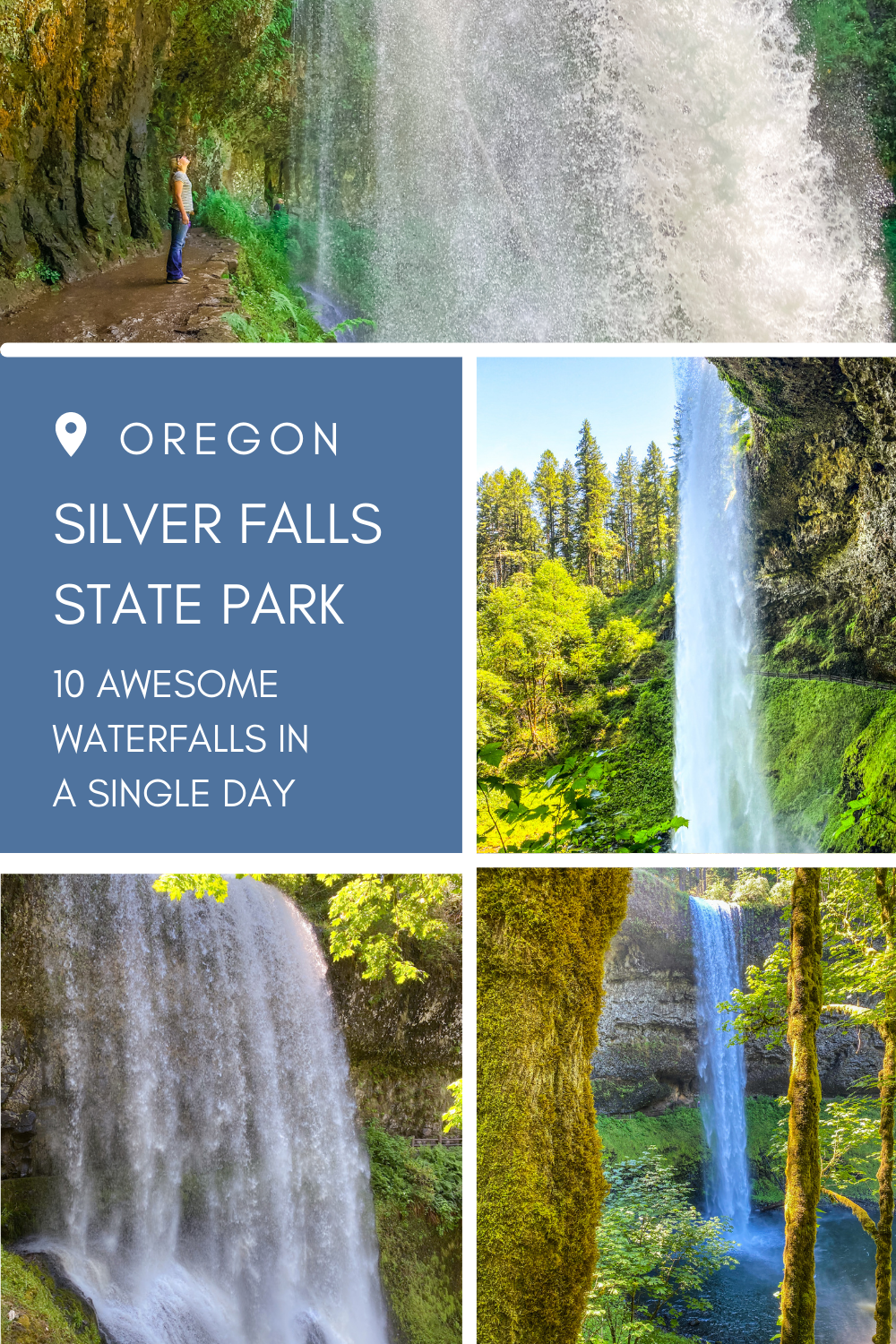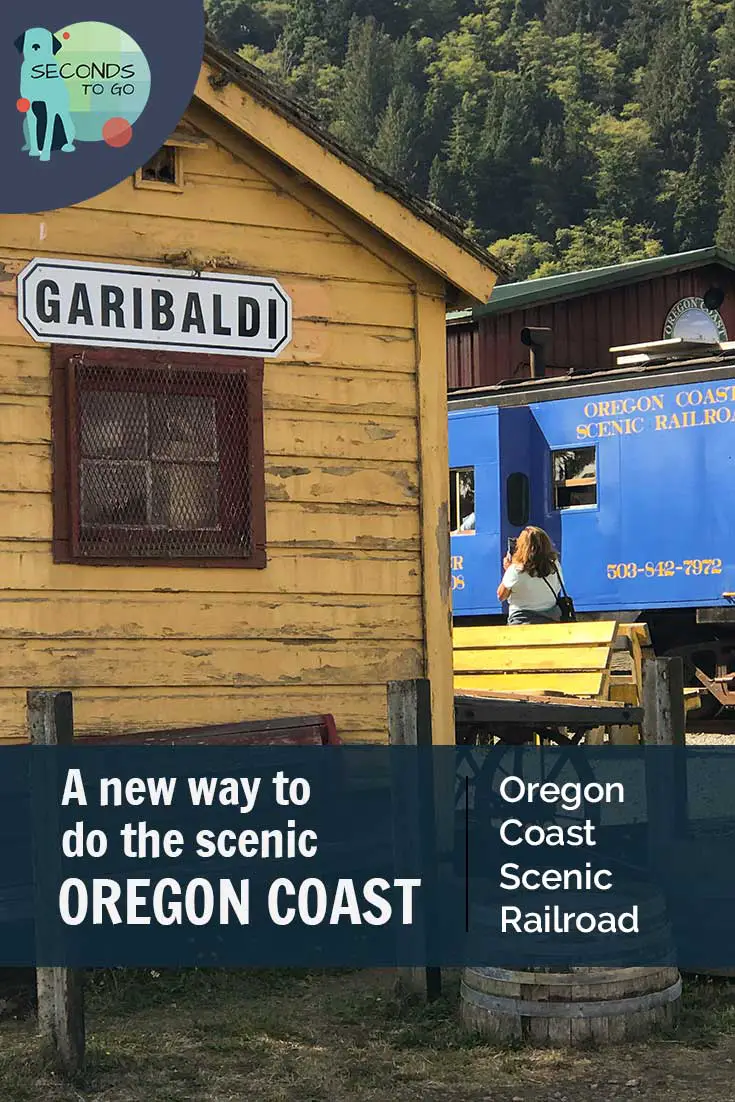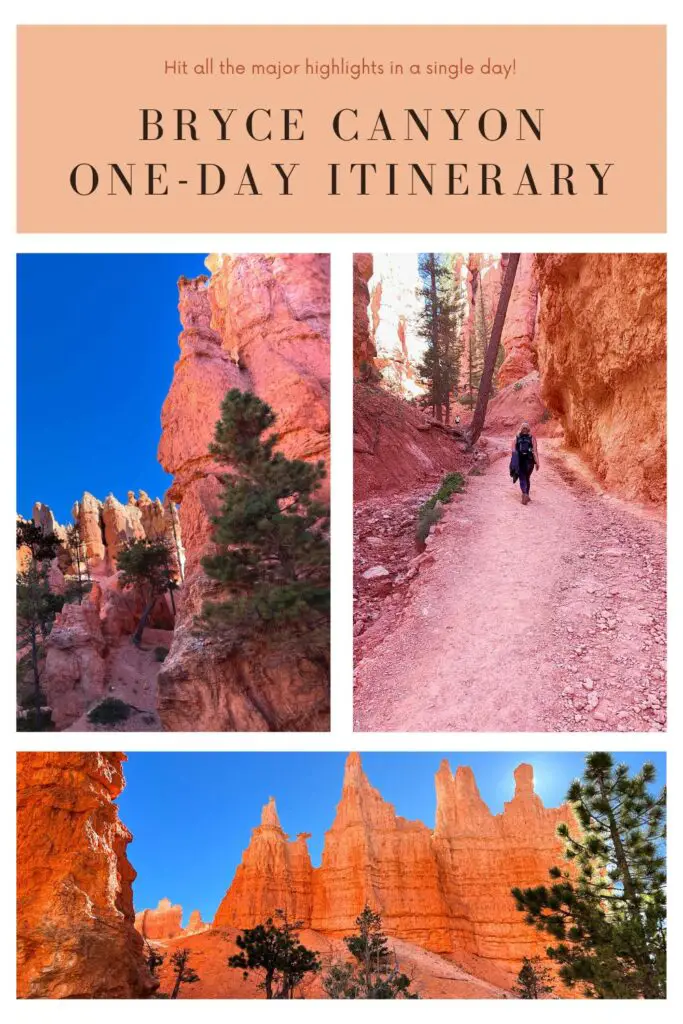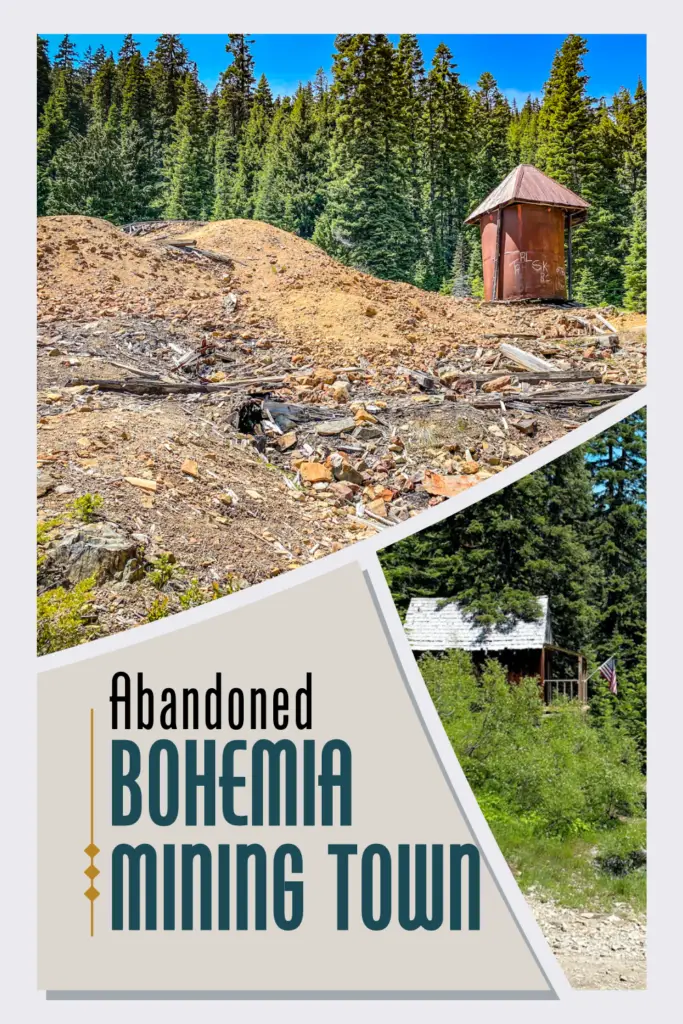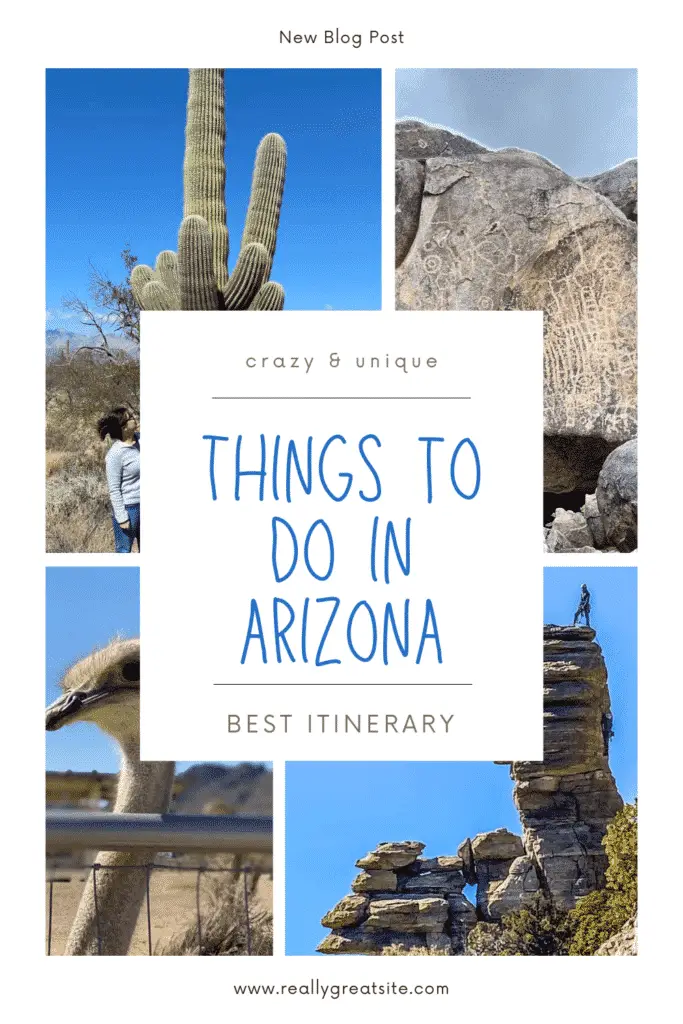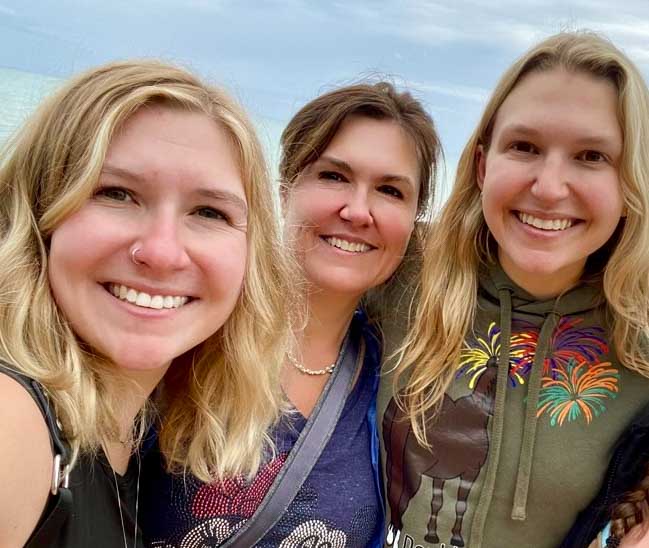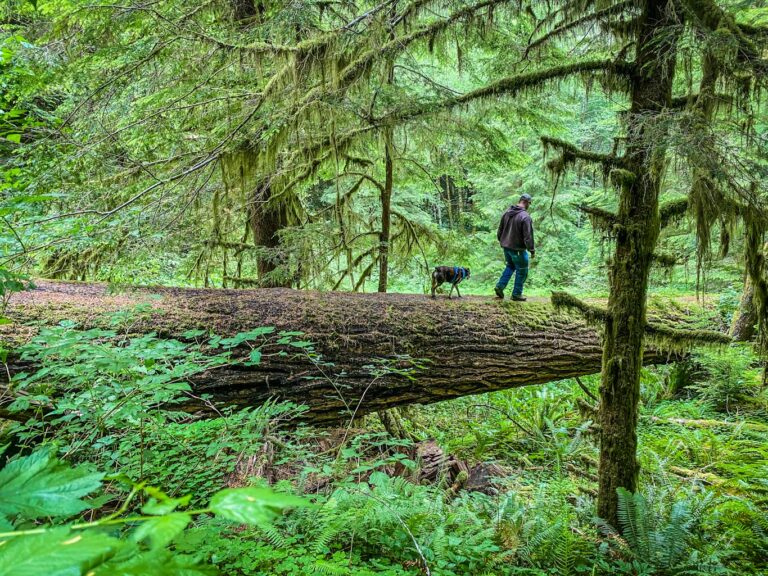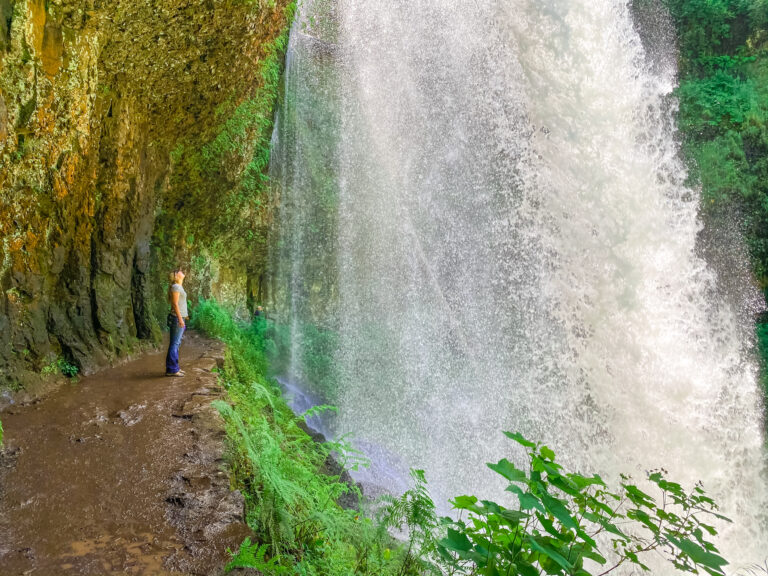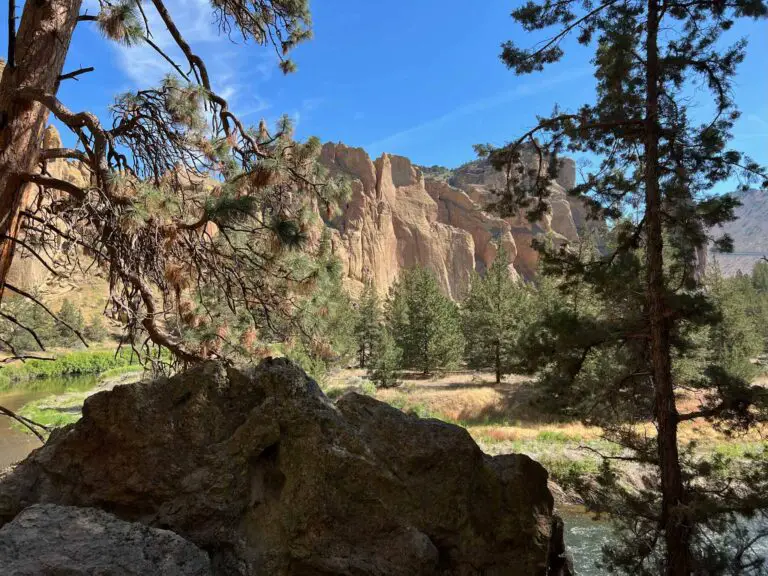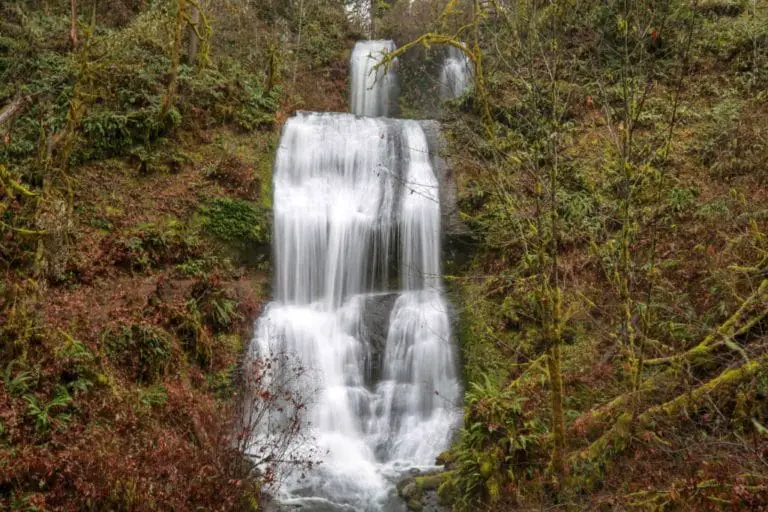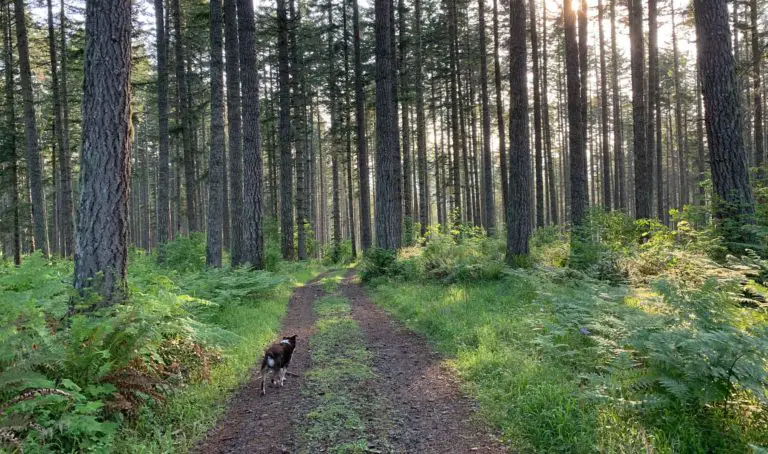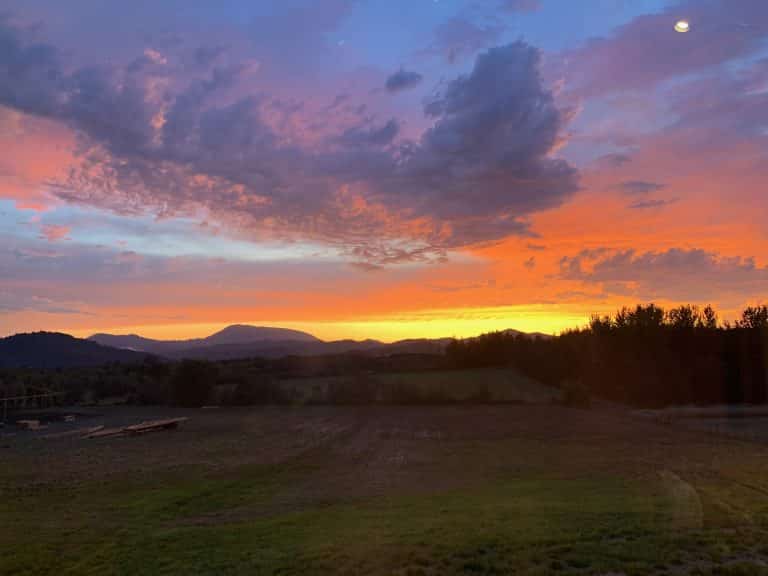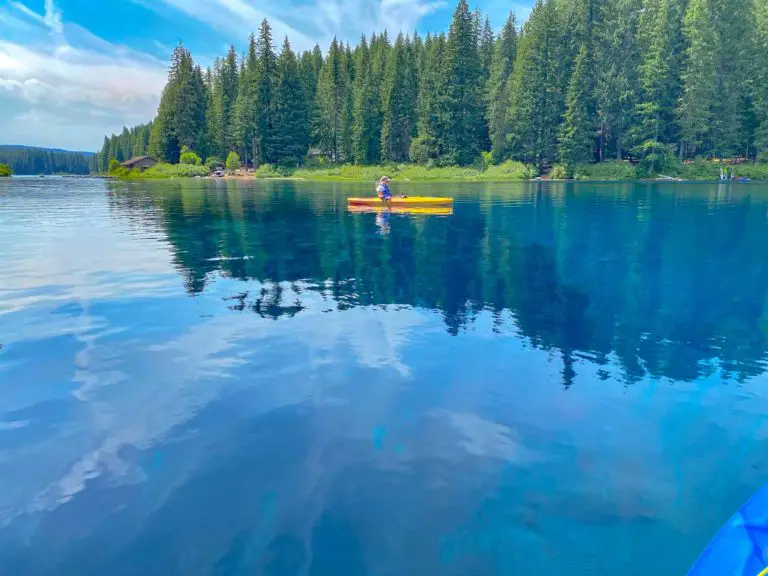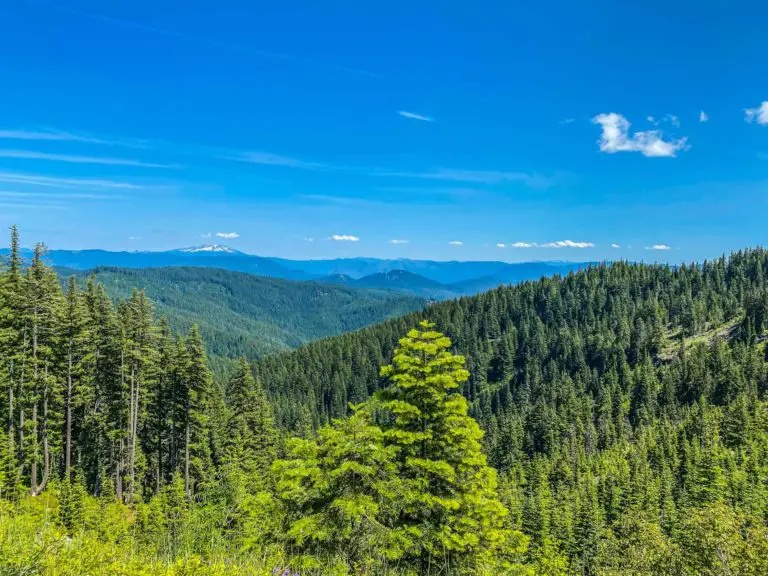Last update: Oct. 29, 2024
The Newberry National Volcanic Monument in central Oregon combines 54,000 acres of land to feature lakes, lava flows, lava tubes, unique geologic formations, and some of the best views of the nearby cascade ranges, all inside one park.
The Newberry Volcanic Monument is mainly all about lava. The park is on an active volcano after all. Many of the hikes, views, and education focus on the lava flows in the area that formed thousands of years ago.
In this article, we will outline some of the main highlights of this unique Oregon destination.
Table of Contents
Getting Started: Newberry Volcanic Monument Visitor Center
While there are endless things to do at the Newberry National Volcanic Monument, we recommend beginning at the visitor center. Here, you can obtain maps, read about the formation of the local geological structures, and ask the rangers any questions you may have.
My favorite part about the visitors center is the 3D map of the area. It showcases the calderas and lava flows inside the park, as well as the lakes.
From the Newberry Volcanic Monument visitor center, there are three hikes, and the road to lava butte, where you can walk around the top of the caldera. During peak times, the park runs a free shuttle to the top of the butte.
Hiking at Newberry Volcanic Monument
Two short hikes depart immediately from the Visitor’s Center, the Whispering Pines hike and the Trail of Molten Lands Hike.
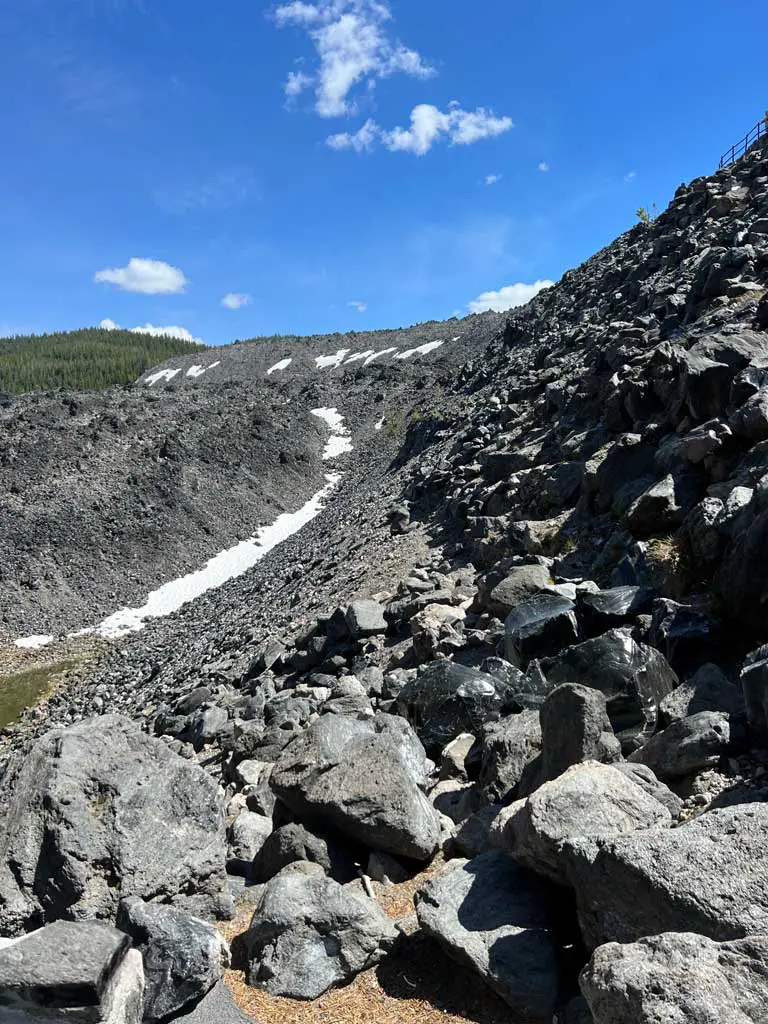
The latter is a bit over a mile long, and weaves through a lava flow. Interpretive signs explain how the lava flow came to be, as well as the wildlife and plants native to the area. This trail is a loop, with a spur that leads to a viewpoint of the cascade range.
The Whispering Pines Trail is a short half mile stroll along the edge of the lava flow, through native pines.
The longer trail that departs from the Visitor Center is the Sun Lava trail, a 5.5 mile connector trail, which leads from the visitor center to the Benham Falls Day Use Area.
Benham Falls
The Benham Falls East Trailhead is inside the Newberry Volcanic Monument and connects to the visitors center by a forest road, or the Sun lava hiking trail.
At this trailhead, a 1.5 mile out and back hike will lead you to Benham Falls. The hike is calm, but does feature one slight incline.
Visiting the Lava Butte Cinder Cone at Newberry National Volcanic Monument
One of the highlights of visiting Newberry National Volcanic Monument is the chance ascend to the crest of the Lava Butte Cinder Cone, rising 500 feet above the lava flows at its base. From here, you have expansive views in all directions as you stroll the rocky path around the rim.
If you plan to hike your way to the top, be advised the only way onward and upward is by use of the paved road. It might be simpler to drive to take the shuttle to the top when it is operational. During non-peak travel times – before mid June or after mid-October – you may be able to drive your own vehicle to the top.
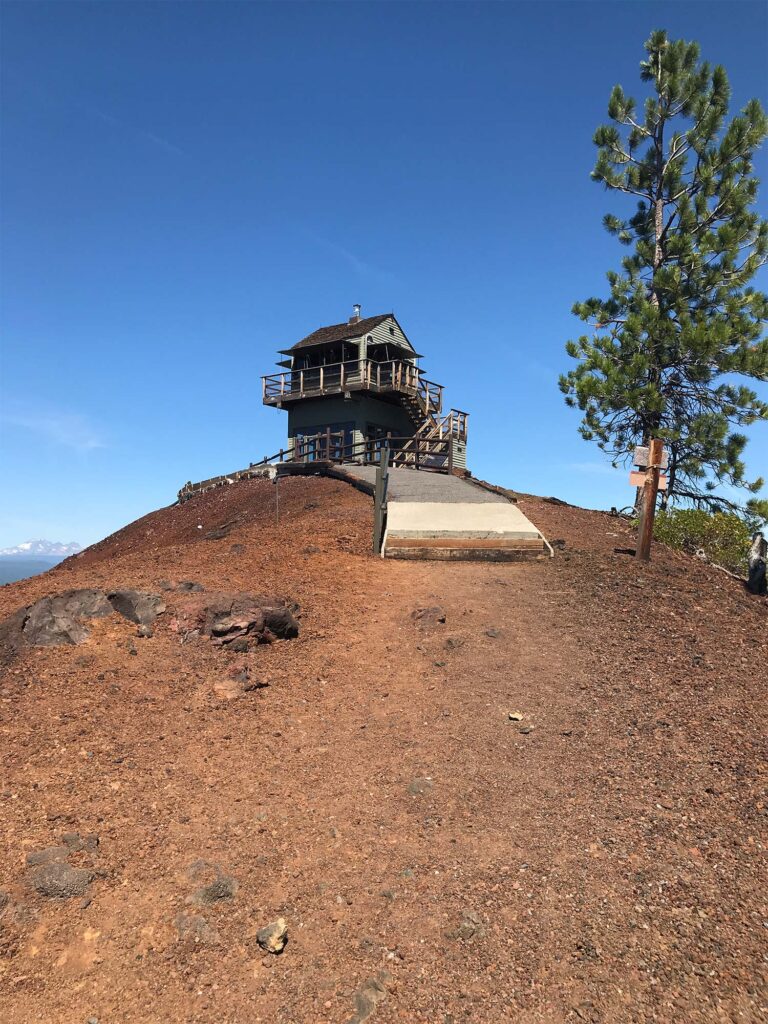
Newberry National Volcanic Monument Lava Tube
The Lava River Cave inside the Newberry National Volcanic Monument is not exactly a cave, but instead, a tube formed by an underground flow of lava.
The tube is 1.1 miles long, which is the longest lava tube in the state, and takes about 2 hours to tour.
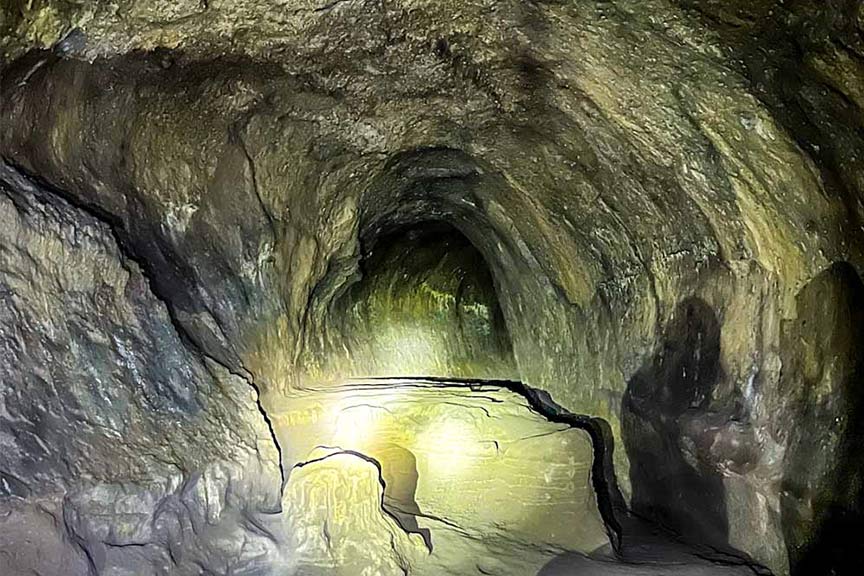
The cave is open daily from May through middle of September, and reservations are required.
Inside the lava tube, expect dark, damp and cold conditions, so plan accordingly. We recommend a winter coat, gloves, and a very bright light. Lights are available for rent there.
You can learn more about visiting this site in our dedicated Lava River Cave article.
The Lava Cast Forest of the Newberry Volcanic Monument
One of my personal favorite ways to see the lava flow is at the Lava Cast Forest trail. This out of the way hike inside the Newberry National Volcanic Monument is a private easy stroll on a paved pathway.
Beyond the lava flow itself, the Lava Cast Forest hike winds around the unique lava formations called lava casts. Lava casts are formed when slow moving lava encounters trees. When conditions are right, the lava cools around the trees and hardens, as the wood burns away beneath. This leaves perfect formations of the trees that once stood there.

These unique and rare formations are right next to the trail. Some are from singular trees, some of the lava casts formed around two trees at once, and some even formed around downed trees.
The trail itself is easy, with the first half being accessible. The only difficult part about this hike was the drive out there. The road was rough, and long. For more detailed instructions, and more info, click here.
Big Obsidian Flow
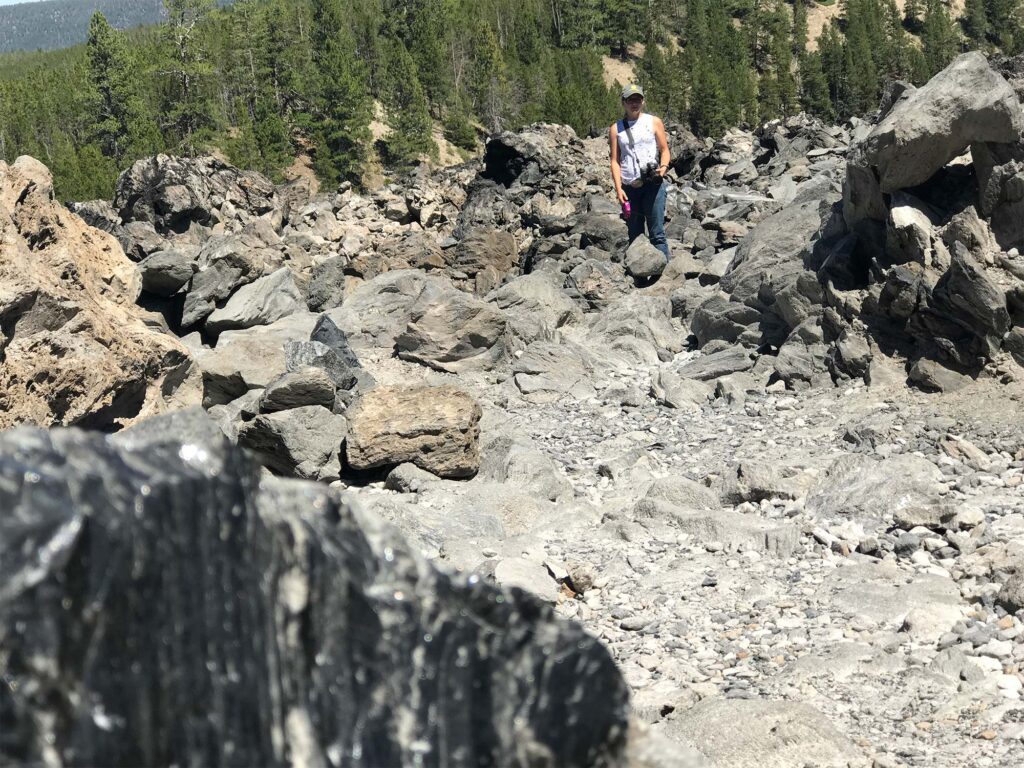
Another immensely unique area of the Newberry Volcanic Monument is the Big Obsidian Flow. This is exactly how it sounds: a gargantuan flow and pile of naturally occurring obsidian.
Rather than the traditional lava flows that can be seen throughout the Newberry Volcanic Monument, the big Obsidian Flow stands out for its glass like appearance.
Obsidian forms when lava cools rapidly, before it has a chance to crystallize, giving it a glass like look.
The Big Obsidian Flow is near Paulina Lake, and covers roughly 1 square mile. A trail winds through the flow, before splitting and forming a loop. The path begins paved, before becoming steep stairs, and then uneven rock, as the trail passes over and through the flow.
The trail itself is a little over ½ mile, and is rough terrain with some inclines. It offers viewpoints at the top. Shoes with ankle support and thick soles are recommended.
Dogs should not be brought onto the flow, as the sharp rocks will cut their feet. Removing rocks and obsidian from this site is prohibited.

Paulina and East Lake Side of Newberry Volcanic Monument
In some areas of the Newberry Volcanic Monument, stark harsh lava flows join pristine greenery and refreshing water depths to form a new kind of landscape. This is the case at Paulina and East Lake, located inside of the Newberry National Volcanic Monument. These lakes both offer stunning views, boating, dining, cabins, fishing, and camping.
Both lakes are located inside of the caldera of Newberry Volcano. Paulina Lake covers roughly 1500 acres, and is as deep as 250 feet, making it the bigger and deeper lake.
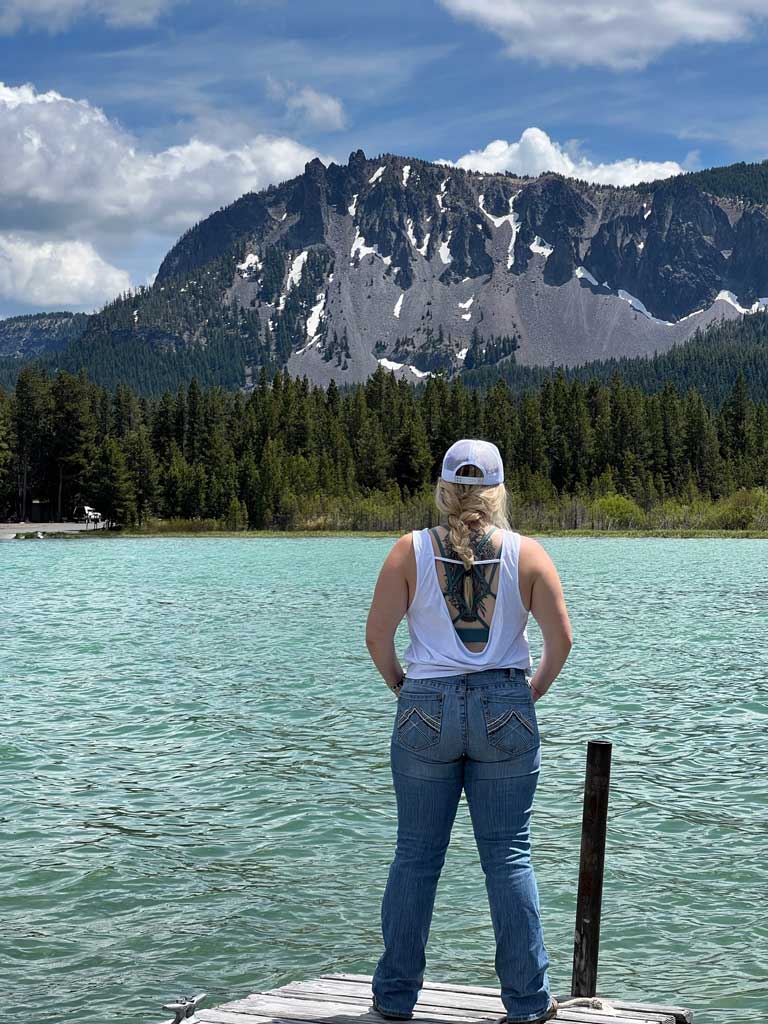
Paulina lake also has a waterfall and surrounding hot springs, though you will need to take a short trek to reach the viewing platform for Paulina Falls.
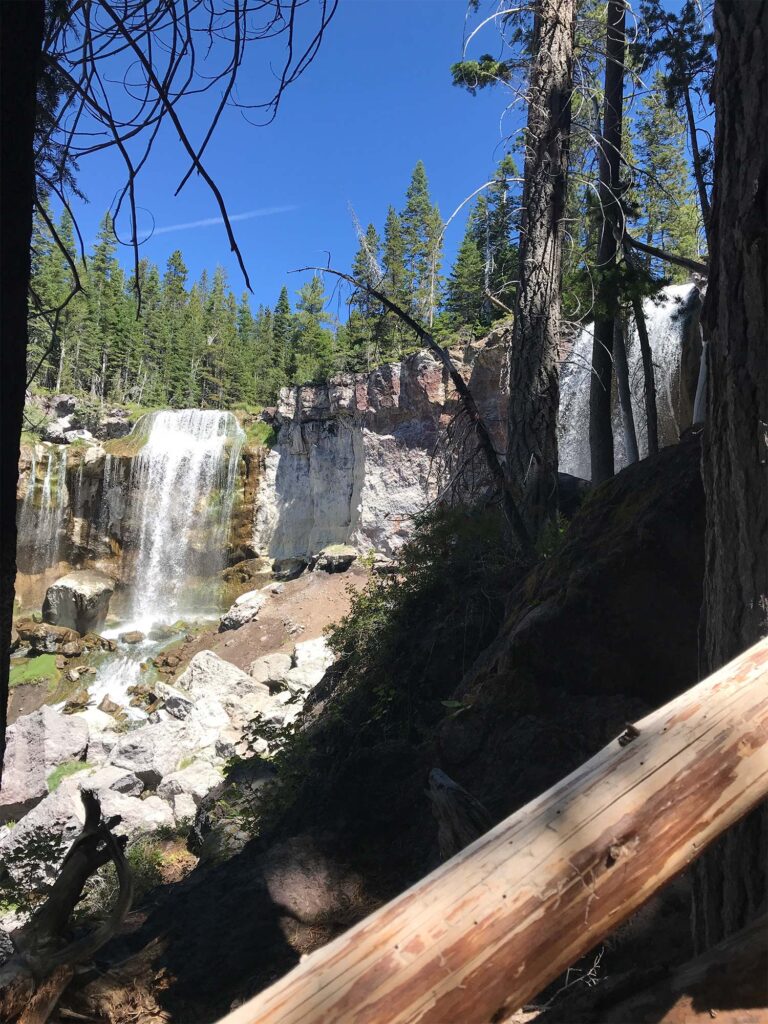
East Lake is smaller, covering roughly 1,000 acres, with an average depth of 67 feet. East Lake is known as one of the best trout lakes in Oregon, and contains: kokanee, rainbow trout, Atlantic salmon, chub, and brown trout.
Lakeside cabins can be rented here, and the lakeshore varies from wooded to sandy beaches. If you are hungry while exploring the Newberry Volcanic area, stop at the Blue Duck Grill. It’s nice waterfront dining with some nice lunch or dinner selections.
Newberry Volcanic Monument Is One of Oregon’s Hidden Gems
Hidden gem may sound a bit cliché when speaking of travel destinations, but it aptly describes this primo destination in central Oregon. It’s surprising how many people are unaware of this spectacular area, including local residents of state. For travelers, that can be a good thing, After all, it isn’t often that you have the opportunity to visit a national landmark or park without hordes of people.
If you plan to visit Oregon, this is one to put on your bucket list.
Other Places You May Enjoy

